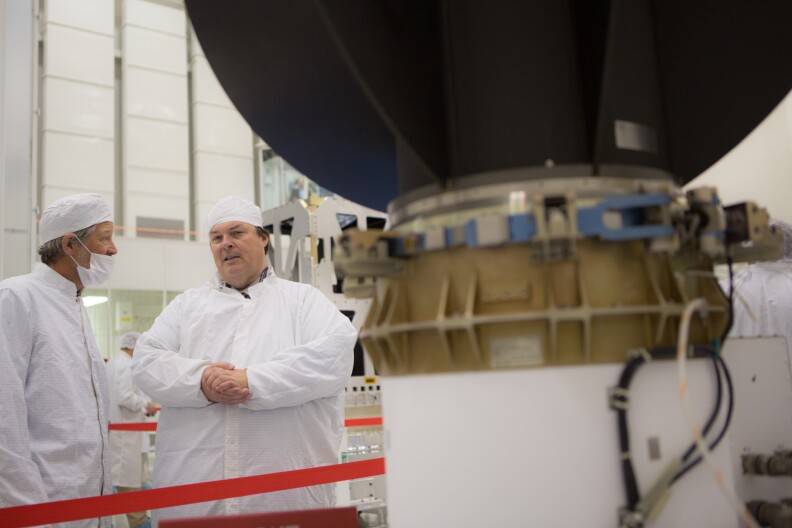Pasadena's Jet Propulsion Lab is well-known for its missions in the solar system. Scientists there landed the rover Curiosity on Mars last year, but next year, JPL will set its sights on Earth to study the effects of climate change. KPCC's Sanden Totten reports.

NASA administrator Charles Bolden receives a briefing on the mount for the RapidScat system that will be attached to the International Space Station.
(
Grant Slater/KPCC
)

A JPL technician wires up flight cables that route electronics for the Orbiting Carbon Observatory-2.
(
Grant Slater/KPCC
)

Two JPL scientists talk about work on the RapidScat scanner that will be attached to the International Space Station.
(
Grant Slater/KPCC
)

Scientists gather on the work floor of the Spacecraft Assembly Facility. The room's air has fewer than 10,000 particles of dust of 0.5 micron or larger in each cubic foot of air.
(
Grant Slater/KPCC
)

NASA scientists discussed ongoing projects at JPL's clean room. Anyone entering the facility has to wear a bunny suit meant to keep airborne particles out of sensitive equipment.
(
Grant Slater/KPCC
)

JPL director Charles Elachi led NASA administrator Charles Bolden on a tour of the Spacecraft Assembly Facility.
(
Grant Slater/KPCC
)

Kieran McKay, a JPL flight technician, walks toward along the floor of the Spacecraft Assembly Facility.
(
Grant Slater/KPCC
)

A JPL scientists walks past High Bay Bob, the official mannequin of the laboratory's cleanroom.
(
Grant Slater/KPCC
)

Dragana Perkovic-Martin, an instument systems engineer in the RapidScat build team, explains where the device will attach to the International Space Station.
(
Grant Slater/KPCC
)


